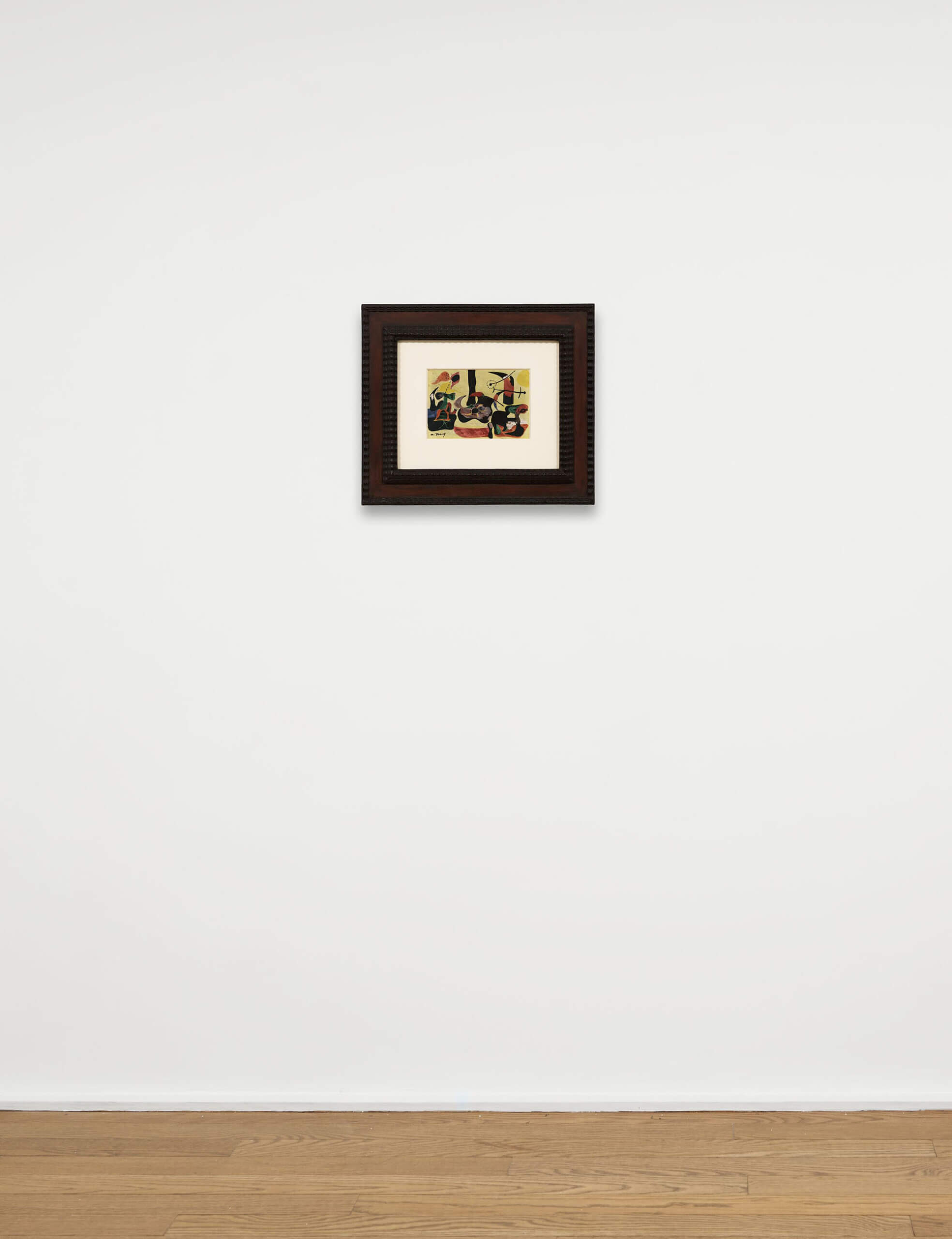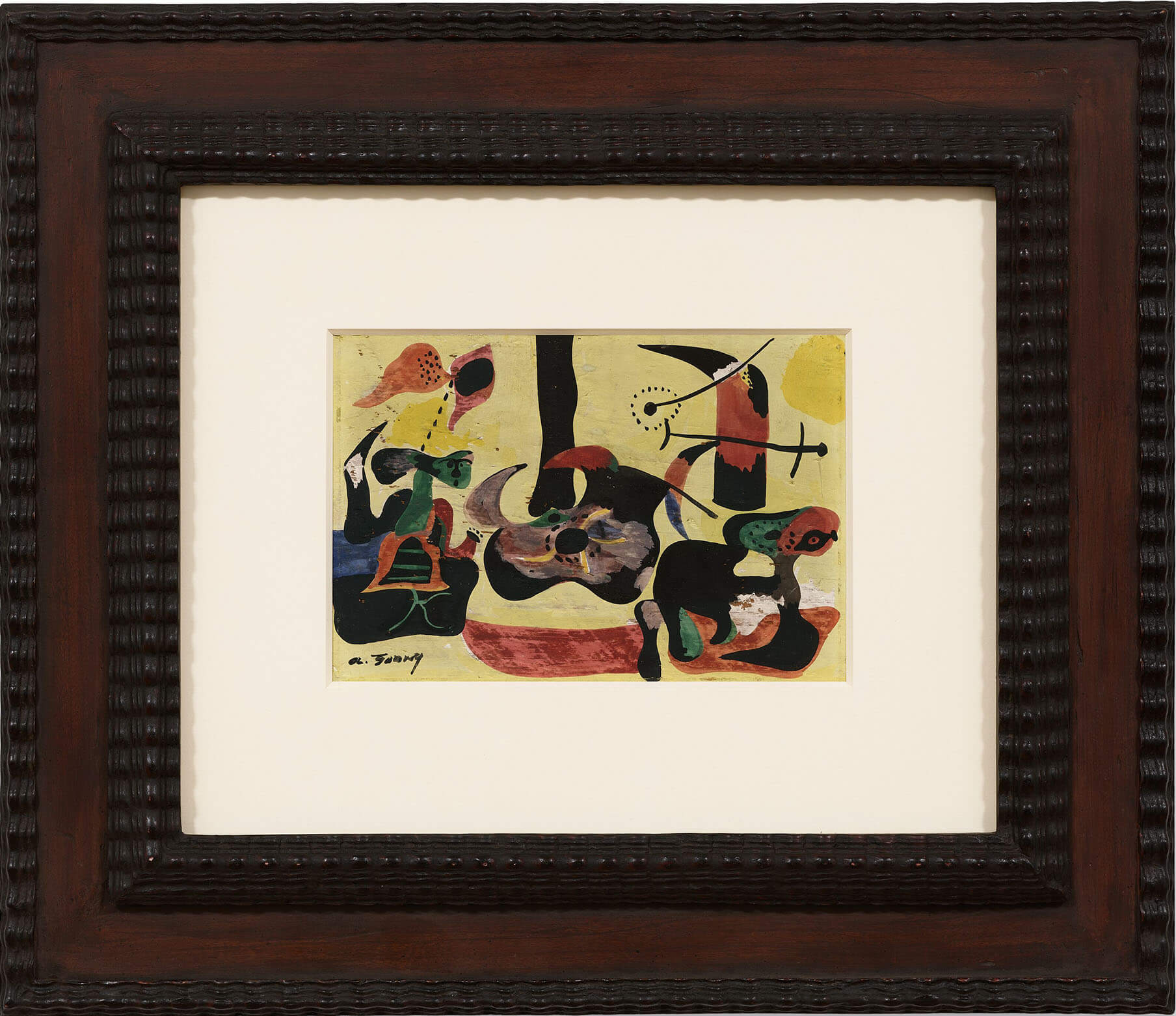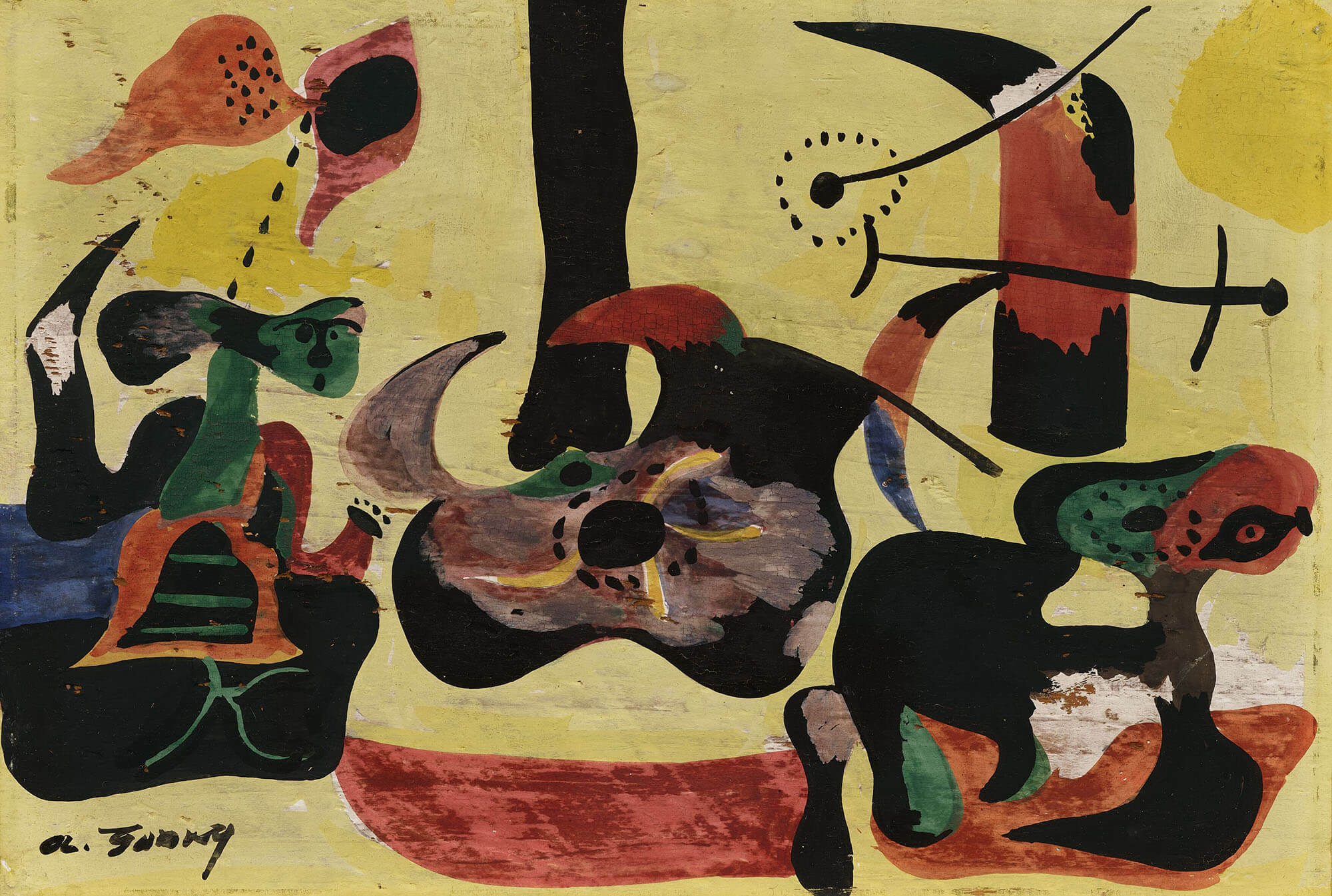
Arshile Gorky
Garden in Sochi
Garden in Sochi
1940 Watercolor and gouache on balsa wood 12.9 x 18.6 cm / 5 1/8 x 7 3/8 in Recto, signed lower left: 'A.Gorky'
USD 900,000
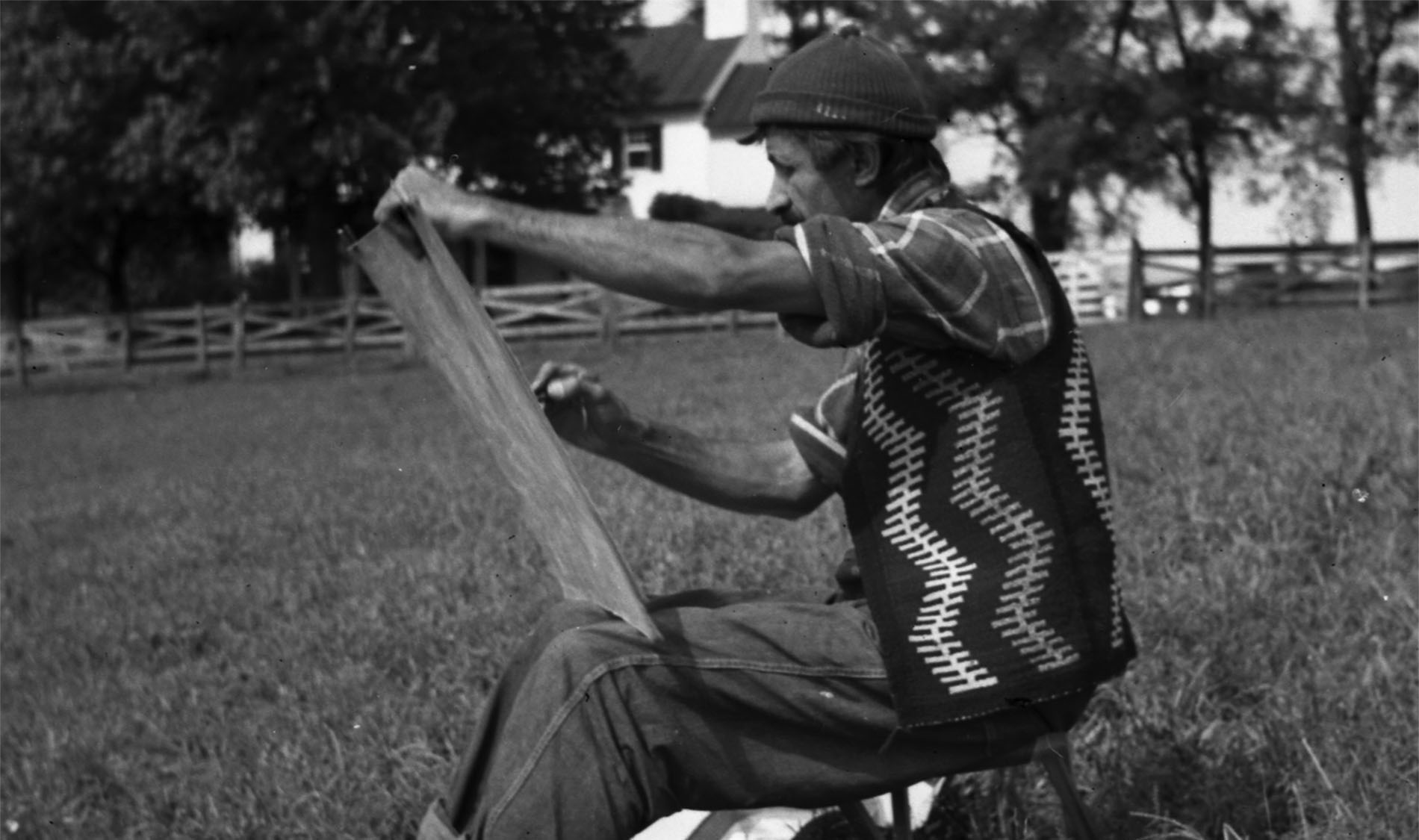
Arshile Gorky
Arshile Gorky was born an ethnic Armenian in Ottoman Anatolia in c.1904. Fleeing the genocide that claimed the life of his mother, he emigrated to the United States as a teenage refugee in 1920. After five years with relatives in Massachusetts, Gorky moved to New York and changed his name in honor of the celebrated Russian poet. Refusing all categories, whether artistic or political, as necessarily reductive, Gorky forsook assimilation in favor of celebrating his otherness, becoming a central figure of the cultural milieu of a city on the brink of Modernism.
Garden in Sochi
In Arshile Gorky’s ‘Garden in Sochi’ (1940) a fantastical swarm of strange, vibrantly hued biomorphic forms—humanoid, bird-like and vegetal, seemingly captured mid-metamorphosis—are suspended within a buttery yellow field. Extending from a series dedicated to the theme of ‘Garden in Sochi’, a body of abstract works set on varied colored grounds created between 1939 and 1943, this particular work situates Gorky during a significant period of stylistic transition. [Figs. 1-3] Although inspired by the artist’s earliest childhood memories in Armenia, this fluid, abstract composition suggests not a landscape per se, but a coalescence and culmination of iconography derived from the natural world, autobiography, and artistic heroes.
In a letter to his sister, Vartoosh, written in November 1940, Gorky described the imagery that prompted the ‘Garden in Sochi’ series, recalling ‘The Garden of Wish Fulfilment’ in his Father’s garden ‘and the Tree of the Cross upon which authentic Armenian villagers attached the colorful pennants of their clothing…. In my art, I often draw our garden and recreate its precious greenery and life. Can a son forget the soil which sires him?’ [1] Despite overt references to Sochi, here and in the titles of related paintings, Gorky never visited Sochi, a Russian port city located on the Black Sea coast. Sochi, as posited by Harry Rand, is likely a mistranslation of the Armenian word for poplar tree, which is ‘Sos’, or ‘Sosi’. Rand notes, ‘Gorky wilfully introduced confusion concerning the title of the series…divert[ing] attention from his native land’s heritage—and therefore his sources—to Russia. [2] This tendency to associate himself with Russia is also located in his ‘Khorkom’ works [Figs.4-5], an earlier related series of paintings that he titled ‘Xhorkom’ using Russian spelling to refer to the Armenian village in which he was born. And, most evidently, indicated in his use of the surname Gorky, which he adopted from Soviet writer Maxim Gorky.
‘Garden in Sochi’ proposes a recuperation of Gorky’s mythic agrarian past as much as it expresses his transformative ambitions. Gorky was deeply inspired by the work of his avant-garde forbearers, Picasso and Joan Miró, and, here, managed to assimilate their work into his own. The prevailing motif of the ‘Garden in Sochi’ series is that of a large boot-like form, visible here in red along the lower edge of the composition. Thought to represent his mother’s old-fashioned butter-churn or a Turkish slipper, it is also understood as a direct reference to Miró’s ‘Still Life with Old Shoe’ (1937). [3] Consisting of four symbolic objects: an apple with protruding fork, a shoe, a gin bottle and a broken loaf of bread, Miró’s painting is considered as a response to Picasso’s ‘Guernica’ (1937) and an allegorical expression of protest against the atrocities of war.
Here, Gorky borrows and transfigures Miró’s painting—and by extension, Picasso’s—flattening the field and rendering his objects in organic shapes, seemingly shifting before our eyes. Conveying a multitude of memories, emotions, objects, sites and identities, ‘Garden in Sochi’ merges past and present, folkloric and modern, proposing an artistic metamorphosis. And in this way, as Robert Goldwater poetically described, it reflects ‘the absence of absolute boundaries in nature and the symmetry of the passage of moving matter from one state into another’. [4]
[1.] Villagers believed this tree to possess supernatural powers leading to fertility. Arshile Gorky quoted in Harry Rand, ’Arshile Gorky. The Implications of Symbols’, Oakland CA: University of California Press, 1991, p. 82. [2.] Ibid. [3.] Miró’s painting resonated deeply with Gorky, who had seen the work first hand at the Pierre Matisse Gallery in 1938 and later expressed his admiration for it during a discussion with Willem de Kooning. Robert Goldwater, ‘The Paintings of Arshile Gorky. A Critical Catalogue’, New York NY: New York University Press, 1980, p. 75. [4.] bid., p. 72.
‘The eye spring...’ André Breton once said of his friend, ‘Gorky is for me the first painter to whom this secret has been completely revealed.’
The Eye-Spring
A seminal figure in the shift to abstraction that transformed twentieth-century American art, this documentary provides an introduction to the career, influence and powerful visual language of Arshile Gorky (1904 – 1948). ‘The Eye-Spring’ is directed by Gorky’s granddaughter Cosima Spender, and features Harry Cooper, Senior Curator and Head of Modern Art at National Gallery of Art, Washington; Maro Gorky, daughter of the artist; Gorky’s widow, Agnes Magruder (later Agnes Gorky Fielding); and Matthew Spender, editor of ‘Arshile Gorky: The Plow and the Song’.
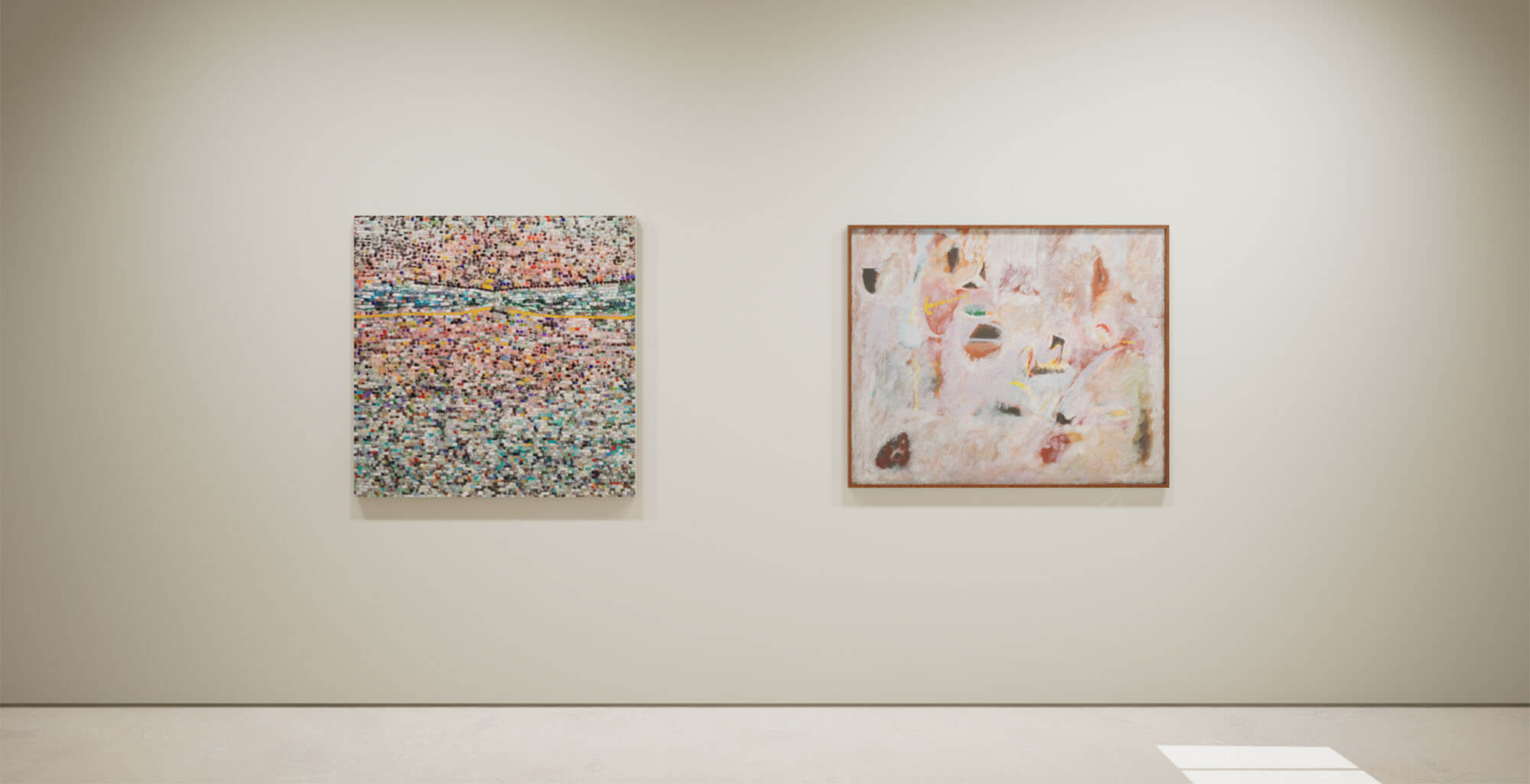
Arshile Gorky & Jack Whitten
Two consummate master artists of the 20th century are shown together in this online exhibition inspired by Whitten himself, who paid tribute to Gorky in a speech he gave in 2017. Whitten described the experience of looking at Gorky’s work as, ‘witnessing something that comes from the deep soul of an artist.’
